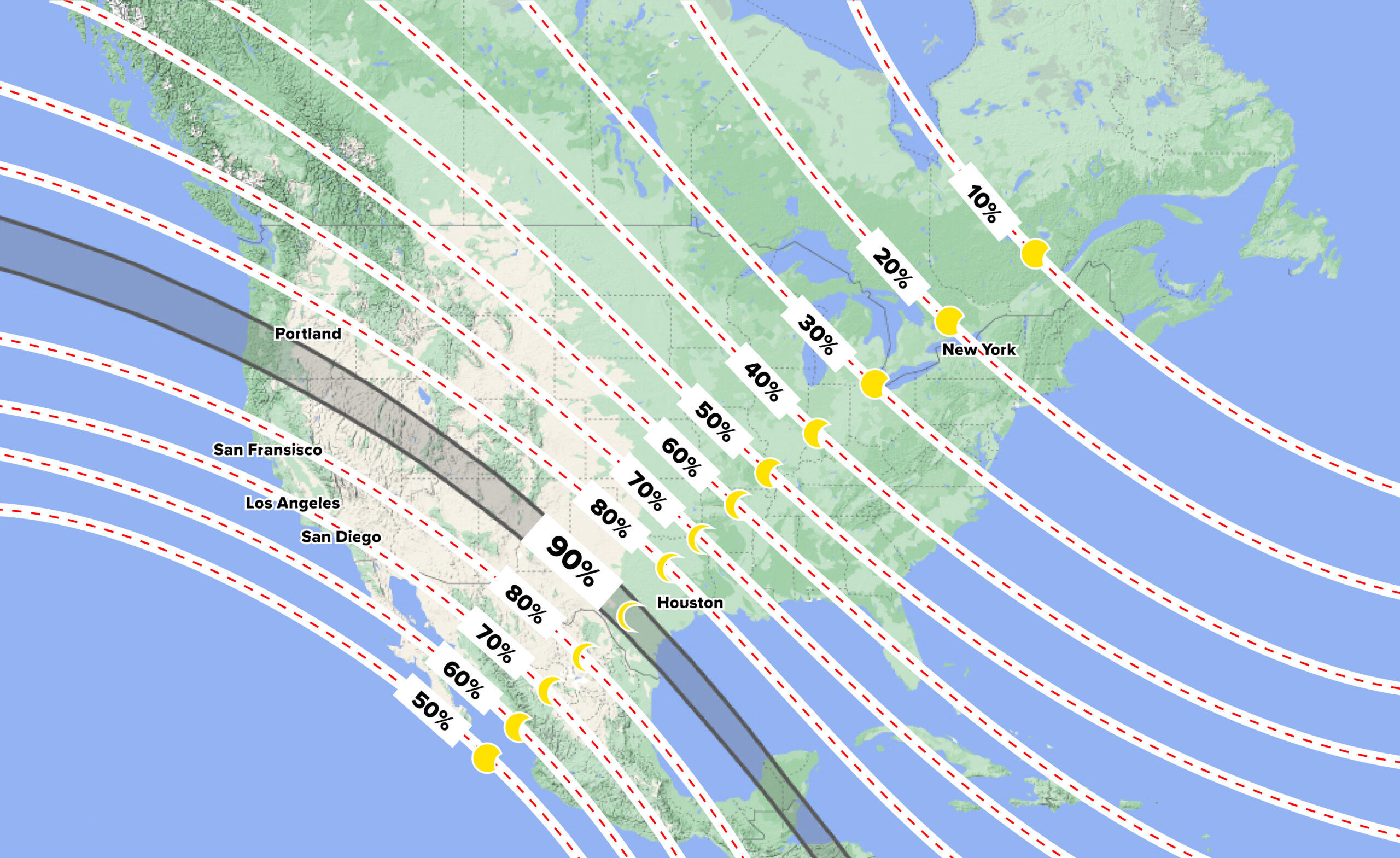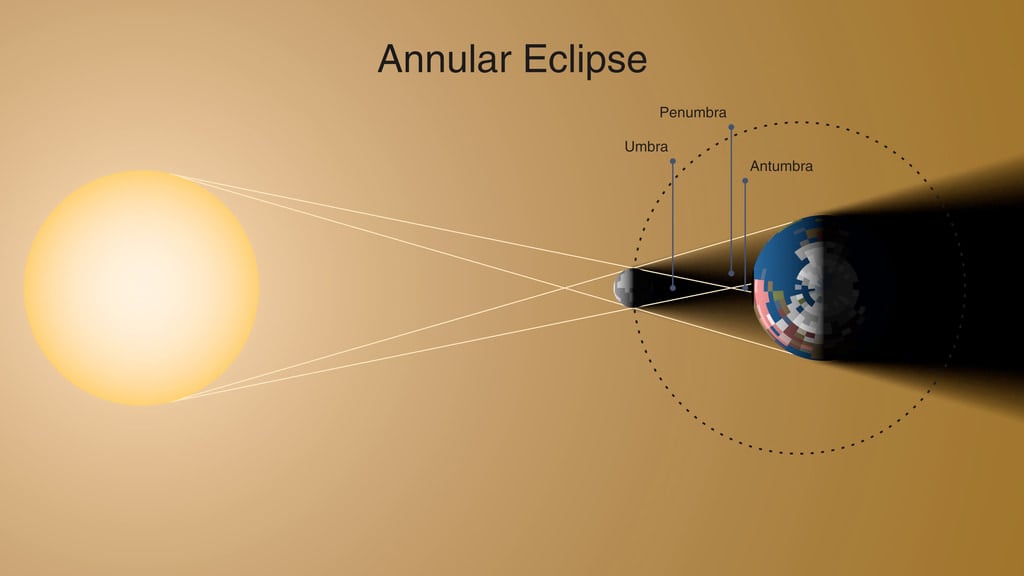This Saturday, October 14, the West Coast of the country will be able to observe a spectacular cosmological event known as an annular eclipse. The path of the shadow created by the Moon passing in front of the Sun will sweep across the country in a south-east direction from Eugene, Oregon to San Antonio, Texas.
The shadow at its fullest will arrive at the Oregon coast at 9:13 a.m. and departs the Texas coastline just 50 minutes later (crossing over three different time zones). Folk in California will be able to see between 70 to 80% of the phenomena so long as the weather permits and due to line of sight, we’ll be able to see the beginnings of the eclipse from about 8 a.m. onwards.
A solar eclipse occurs when the moon covers the face of the Sun as seen from Earth. By a staggering, mind-boggling coincidence, the moon (2,158 miles in diameter) — as seen from Earth (a typical distance of 238,900 miles) appears the same size as the sun (864,340 miles in diameter) as seen from Earth (a typical distance of 93 million miles).

Credit: NASA Goddard Flight Center
However, because the universe is extremely complicated, the distance from the Earth to the Moon actually changes throughout the course of a year, thus creating some pretty spectacular variations on both solar and lunar eclipses.
During an annular eclipse, the Moon is still centered in front of the Sun, but doesn’t completely obscure it, instead a spectacular ring of sunlight is visible around the Moon’s outer edges. This circle of light is called an annulus, or sometimes a "ring of fire" and only happens when the Moon is at the furthest point from Earth (at its apogee) making it appear slightly smaller than usual.
"Annular eclipses actually happen all the time," Jed Laderman of the Santa Monica Amateur Astronomy Club said, adding, "But they happen all across the world. The last one was in June 2021, but that was over Northern Canada, Greenland and the North Pole. To see another one that falls more or less along a similar path as this one on Saturday, you’d probably have to wait 400 years or so."
Laderman stresses that because this is not a total eclipse and that from here in Southern California it will only be partial, safe, certified glasses should absolutely be worn.

Credit: NASA
"It doesn’t matter what kind of eclipse you’re watching, it is so important to have adequate eye protection. Staring directly at the Sun can easily cause permanent and irreparable damage to your retinas," Laderman says.
There’s a temptation to look somewhere online like Amazon for a cheap pair of solar-eclipse glasses, but Laderman doesn’t recommend that. Instead look for products that have been approved by the American Astronomical Society, to ensure that they meet current safety standards that block harmful radiation, which is very different to putting a pair of shades on if it’s sunny outside.
"It’s an unbelievable phenomenon that reminds us a bit of our small place in the cosmos," Laderman says. "You know, the speed of the Moon’s shadow as it races across North America will vary from more than 550,000 mph [more than twice the speed of a bolt of lightning] to 5,683 mph [about three times the speed of a rifle bullet]. And as it leaves the coast of Texas, it will have slowed down to 1,772 mph [more than twice the speed of sound]."







